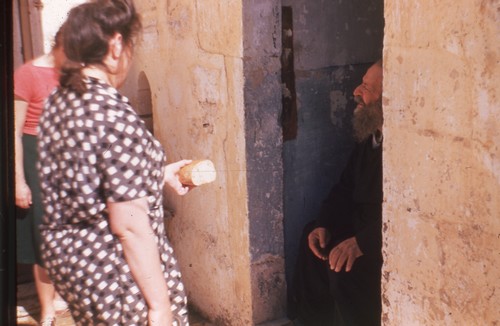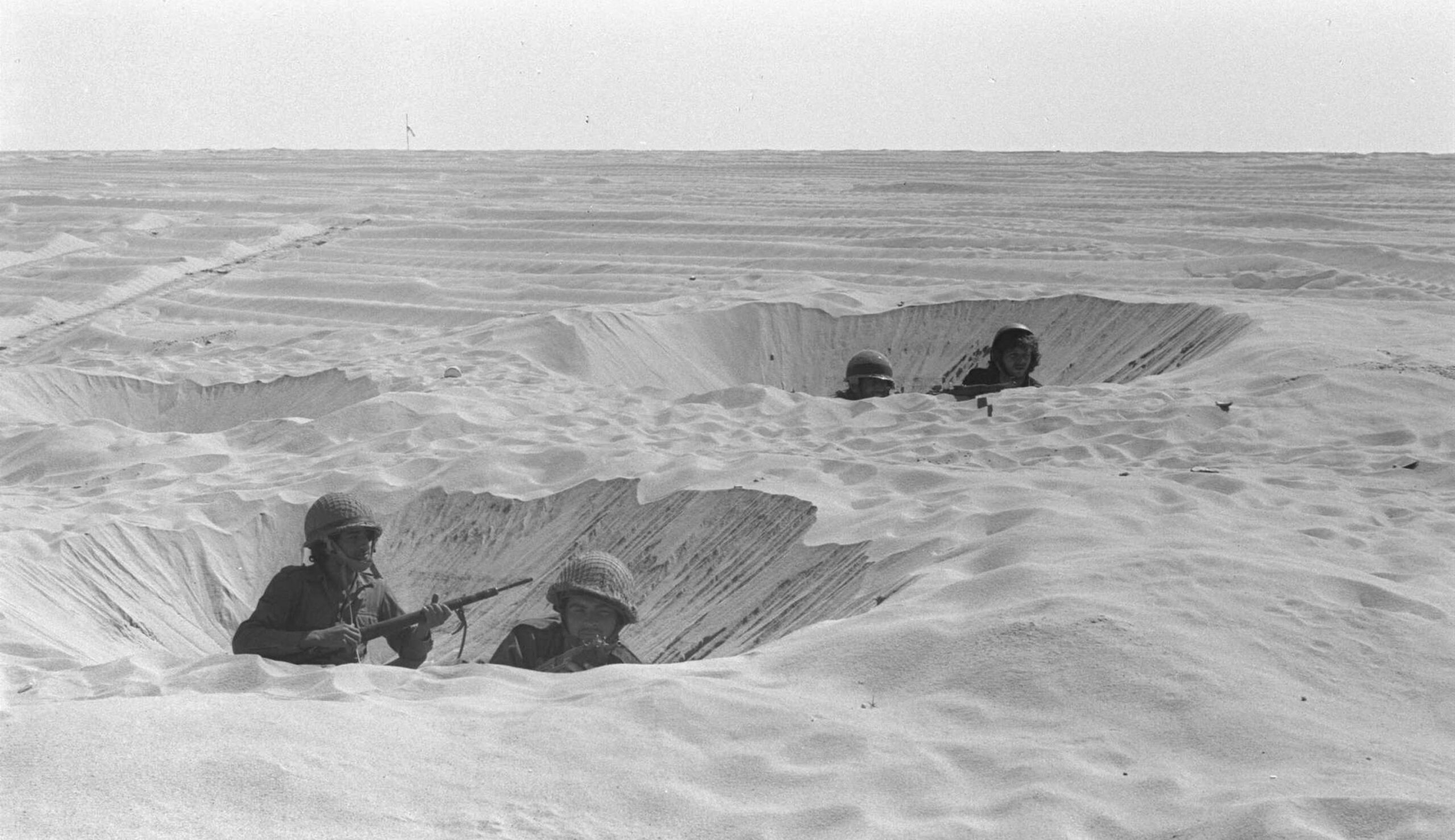In the early days of Israel’s War of Independence, Arab forces managed to cut off Jerusalem, then home to about 100,000 Jews, from the rest of the country. Moshe Levin—a recent immigrant from the U.S. working as a correspondent for United Press and the Palestine Post—took a number of color photographs of everyday life in the city during the subsequent siege, which can now be found at the National Library of Israel. As in biblical sieges of Jerusalem, the residents faced shortages of food and water. In this photograph, Marlin’s wife Betty and another woman give half a loaf of bread to a monk in exchange for water.

Other photographs, together with historical background provided by Amit Naor, can be found at the link below.
More about: Israeli history, Israeli War of Independence, Jerusalem, Jewish-Christian relations


